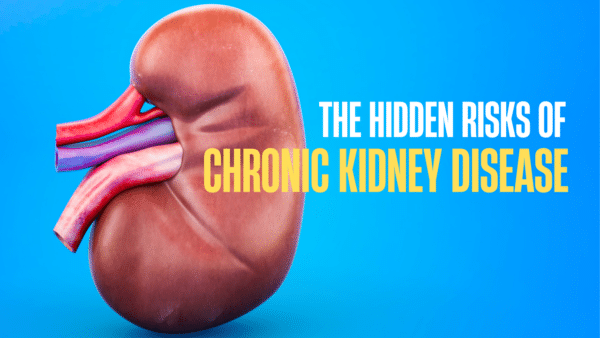
Calculating Cardiovascular Risk
Have a Heart
Your heart is beating as many as 100,000 times a day, every day. That’s 365 million beats a year. Your heart doesn’t take a vacation or a coffee break, or sleep in late. It hits those numbers consistently, in order to pump blood throughout your body. That‘s only the start of what your heart is about. Amazingly, it is an organ that on the inside is essentially hollow.
Wouldn’t you like to have a better understanding of the odds that your heart is healthy enough to give you the life you enjoy? At Walk-In Lab, we believe you need a simple and easy calculator of heart health, one that takes advantage of sensitive and sophisticated blood testing tools.
Beyond the basic lipid profile, the state of cardiovascular testing is advancing and available in simple and affordableblood tests. Especially critical is the ability to identify hidden cholesterol problems that may increase the risk of developing heart disease even when routine cholesterol test results are normal.
State of the Heart
Your heart moves the blood that carries oxygen and nutrients throughout the body and transports carbon dioxide and other wastes to the lungs, kidneys, and liver for removal. The heart ensures its own oxygen supply through a set of coronary arteries and veins. The heart is also an endocrine organ that produces the hormones that coordinate heart function with blood vessels and the kidneys.
Let’s start with the characteristics of a clean and healthy heart; more than likely the heart you had when you were born and kept healthy into childhood. You’ll notice there are no clots, scar tissue or damage to the artery walls. Although cardiovascular disease or heart disease usually affects older adults, the early signs of it begin in early life, making primary prevention efforts necessary from childhood.
Heart disease is a general term that refers to a variety of acute and chronic medical conditions that affect one or more of the components of the heart. Cardiovascular diseases remain the biggest cause of deaths worldwide. Heart disease can be structural or functional. Heart disease may not always cause the overt symptoms associated with cardiovascular disease (chest pain, angina), and may show nonspecific symptoms such as fatigue.
Sensitive and Sophisticated Tools
Testing for heart disease helps distinguish between symptoms that are heart-related and those symptoms that are due to another condition. Testing is ordered to help determine which heart disease is present, to determine whether the disorder is acute or chronic, to monitor a cardiac event that is in progress such as a heart attack, and to determine the severity and extent of the disease.
Testing people for existing heart disease is not the same as cardiac risk testing. Cardiac risk testing is performed to screen asymptomatic people to help determine their risk of developing coronary heart disease. Cardiac risk assessment considers health factors that have been proven to indicate your chance of having a cardiovascular event, such as heart attack or stroke. They are ranked to indicate the degree of risk: slight, moderate, or high.
Perhaps the most important indicators for cardiac risk are those of your personal health history. Age, hereditary factors, weight, cigarette smoking, blood pressure, exercise history, and diabetes are all important in determining your risk.
A lipid profile is the most important blood test for risk assessment. The standard lipid profile measures cholesterol, high density lipoprotein cholesterol (HDL-C, “good” cholesterol), and low density lipoprotein cholesterol (LDL-C, “bad” cholesterol) and triglycerides. If any or all of your results of your lipid test are significantly outside these ranges, your risk of a cardiac event is increased. Diet, exercise, and possibly medication may reduce levels, thereby reducing your risk.
The VAP™ cholesterol test is a comprehensive lipoprotein analysis, using an advanced technology that provides an accurate, individualized picture of heart disease risk. The VAP Test was named one of “Ten Ways to Live Longer” by Forbes.com, and selected as one of “Five Tests Worth Paying for” by The Wall Street Journal.
Lessons from Lipoprotein
We’re all born with a certain amount of lipoprotein; it doesn’t change over our lifetime and isn’t affected by drugs. The amount of lipoprotein A varies greatly from person to person, so it allow for highly-individualized analysis.
Lipoprotein A is good for determining a healthy person’s risk of getting cardiovascular disease, and can also show your risk level for heart attack or stroke. This test is given to those who have a family history of cardiovascular disease, have heart or vascular disease, or have had a heart attack; the higher the amount of lipoprotein A in your blood, the greater the risk of heart disease.
Heeding Homocysteine
Homocysteine is an amino acid found normally in the body. Its metabolism in the body is linked to that of several vitamins, especially folic acid, B6, and B12, and deficiencies of those vitamins may cause elevated levels of homocysteine.
High levels of homocysteine in your blood, can cause clots and increase the risk of heart and blood vessel disease.
It plays a role in destroying the lining of your artery walls, promoting the formation of blood clots, and also accelerates the buildup of scar tissue. Recent studies suggest that those people who have elevated homocysteine levels have a much greater risk of heart attack or stroke than those people with average levels, especially if you have other risk factors such as diabetes, high blood pressure, obesity, smoking, or family history.
Standard C-Reactive Protein (CRP) and High Sensitivity C-Reactive Protein (hs-CRP)
C-Reactive protein (CRP) is a substance in the blood that indicates the presence of inflammation and could warn of a heart attack in advance. The test detects elevated levels of CRP in people with infections and inflammatory diseases.
The High Sensitivity C-Reactive Protein (hs-CRP) test is a more sophisticated tool to identify risk of cardiovascular disease, detecting lower concentrations of the protein. It measures CRP that is in the normal range for healthy people and distinguishes people with low normal levels from people with high normal levels. High normal levels of hs-CRP in otherwise healthy individuals have been found to be predictive of the future risk of heart attack, stroke, sudden cardiac death, and peripheral arterial disease, even when lipid levels are within acceptable ranges.
The hs-CRP test is usually given along with tests for cholesterol and triglycerides because these have a significant effect on your risk level. You should not order this test if you are taking any anti-inflammatory drugs or have inflammation that is not associated with a cardiovascular disease (such as arthritis) because hs-CRP is a biological marker for inflammation. Hormone replacement therapy can affect the results as well. Order a CRP Blood Test online.
Taking Charge
Heart health is holistic, in that the functioning of your heart affects your whole body. Anything that damages your heart or decreases its supply of oxygen, makes it less efficient, reduces its ability to fill and pump, will disrupt the coordinated relationship between the heart, kidneys, and blood vessels and will harm not only the heart but the rest of the body as well.
Heart health involves understanding the magnitude of your blood testing numbers. A convenient and thorough heart health check gives you a clearer understanding of the exponential risk. For example, elevated amounts of C-Reactive protein in men may triple their risk for heart attack and double their risk for stroke. Elevated amounts in women can increase their heart attack risk up to seven times. Those are important numbers to heed.
A healthy diet and exercising are important in reducing blood pressure, cholesterol, and triglycerides. It is recommended that you consume a low-fat, high-fiber diet that includes at least five portions a day of whole grains and plenty of fresh fruit and vegetables. The healthy heart prescription includes limiting alcohol consumption, tobacco cessation and avoidance of second-hand smoke, as well as 30 minutes of vigorous exercise per day at least five times per week, lowering blood pressure, if elevated, and decreasing body fat if overweight or obese.
Sometimes these lifestyle changes are not sufficient to reach desirable levels. There are also drugs, like statins, that are effective in lipid management. Some conditions involving elevated lipids levels are hereditary, so high lipid levels in these conditions cannot always be lowered sufficiently by diet and exercise.
You not only need to test and understand your risk of having cardiovascular disease, you should also determine the level of risk, and the appropriate level of response and treatment. The best way to start, is by ordering hormone tests today!

